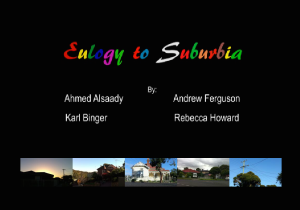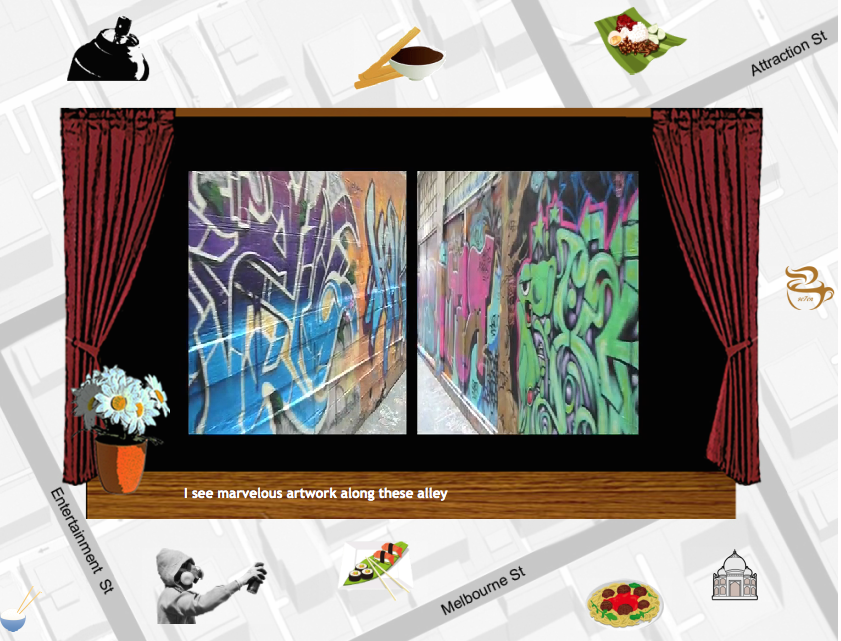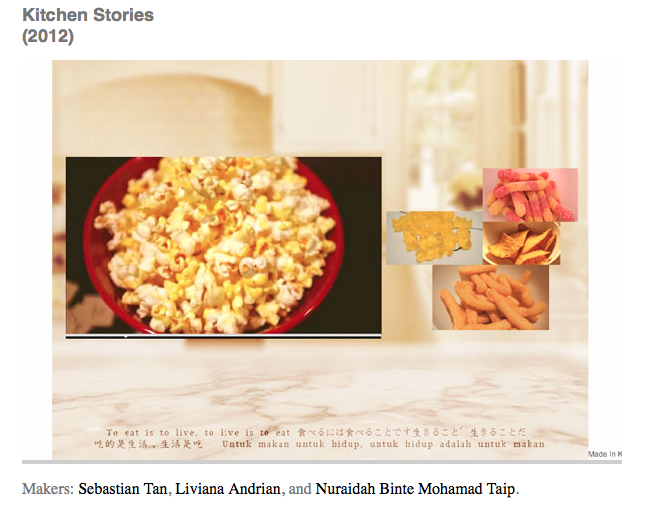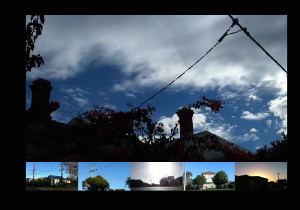
Eulogy to Suburbia, 2012.
CONTENT
Eulogy to Suburbia is an observational K-film which explores the minutiae of domestic life in the suburbs. The film is composed of many fragments displaying residential homes, streets, roads, parks and skies. All of the clips are thematically similar, with no sharp contrasts, yet each clip invites us to look upon a scene with fresh eyes.
Most clips are shot as brief single takes, from the same angle (with the exception of a handful). There is not a lot of movement in the frame of each of these fragments. Where movement is focused upon, it is usually through the action of cars, or wind through tree-lined streets. The fragments present as visually congruent, with the film-makers clearly making an authorial decision to build coherence throughout the K-film.
What I found interesting, in concurrence with Aston & Gaudenzi’s interest in the fundamental human need to try to make sense of the world, was that due to a complete lack of humans in all of the clips, the K-film seems to invite personification of the houses and cars themselves, essentially becoming ‘characters’ within the K-film’s diegesis (2012, p.129; see also Bordwell & Thompson, 2013, p.76). However, I continually had to remind myself that this work is a non-narrative, multilinear artefact which has no cause and effect, nor any sense of temporality.
The overall feel of the K-film breeds a sense of ‘familiar anonymity’ that is encapsulated by suburbia. The content comes across as intimate, but also holds a certain sense of unease which I believe is caused by the mildly voyeuristic nature of the content.
PATTERN
On first viewing, the initial fragments seem to suggest a pattern between light. Many individual clips focus on the expanse of sky above residential spaces, and the previews often group together clips with an aesthetically similar skyscape. This use of natural light could be to imply the warmth of communities which are often embedded in suburbia.
Colour similarity becomes more and more apparent as you begin to negotiate your way through the relations of the film. The fragments are matched according to the predominate colour which appears in the clip.
Sound is a less obvious pattern within this K-film. The majority of the clips contain incidental background noise of engines, car horns, birds, and even the wind. I believe an important comment can be found here between the bleed of industrial life into natural spaces. We are presented with a ‘rhythm’ of suburban life, where urban noises harmonise with Mother Nature’s own soundtrack.
INTERFACE

The interface is built of one viewing window, and five connected preview windows positioned below. This interface is consistent throughout the whole K-film, creating visual solidarity.
The K-film begins with a start SNU introducing the four film-makers accompanied by the sound of birds in the background. The viewer is then offered a beginning point, however these five previews are not set, and change with each viewing.
I found that the deeper you get into the K-film, the five available previews start to have less commonality. However, some seem to appear more often, indicating a higher SNU rating. Some fragments have multiple lives and will continue reappearing as your delve further into the K-film. None of the clips are set on a loop, so a still screen appears at the end of each clip with the previews still positioned underneath.
CONNECTIONS
On the website of their K-film, the authors concede “our project attempts to represent suburbia, not in a negative or positive light, but the way we see it, just the way it is”. I believe that Eulogy to Suburbia is an experimental film in that it is a “poetic reveri[e] which [tells] no story” (Bordwell & Thompson, 2013, p.355). It simply invites observation and new ways of looking at things, without authorial judgement or criticism. This is similar to Serra’s invitation in his film Railroad Turnbridge which asks us to “notice and enjoy the slowly changing pictorial qualities of line, shape, tonalities, and movement” instead of finding ‘meaning’ or looking for deeper qualities (Bordwell & Thompson, 2013, p.356). However, if this is to be taken as true it is interesting to note that the K-film has been titled ‘Eulogy‘ to Suburbia, suggesting that suburbia has in fact died.
The film is neither abstract nor associational, as there is a clear thematic linkage and the audience expects the fragments to be placed in succession with each other. Rather, it aligns more closely with Sobchack’s (1999) conception of a “memory box”, which collects and preserves selected memories. However, she also claims that “human memory and it’s re-collections don’t compute so neatly,” which could be considered a downfall of this particular K-film. The K-film works well as an artefact which can be grazed at, as the viewer may learn to appreciate the scenes more closely with each return viewing.
I think that the K-film’s strongest element is the consistency of its interface. This choice perfectly complements the patterns and relationships that are created within the content of the film: that of the ‘everyday’ repetition of suburbia, which stays steadfast and unchanging. However, as Ryan (2006) reminds us, “we can never be sure that sender and receiver have the same story in mind.”
REFERENCES
Aston, J. and Gaudenzi, S. (2012) ‘Interactive documentary: setting the field’, Studies in Documentary Film, 6: 2, pp. 125–139.
Bordwell, D. and Thompson, K. (2013) Film Art: An Introduction. New York: McGraw-Hill.
Ryan, M. (2006) Avatars of Story. Minneapolis: University of Minnesota Press.
Sobchack, V. (1999) “Nostalgia for a Digital Object: Regrets on the Quickening of QuickTime.” Mille 34. Fall.









